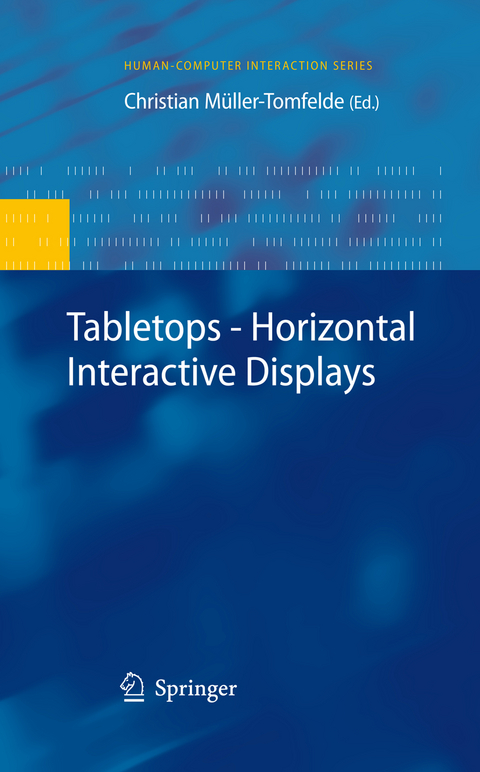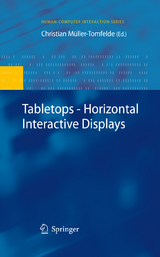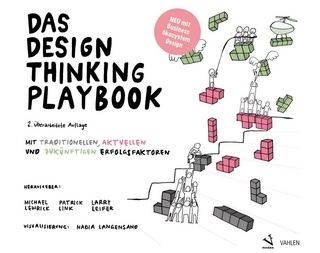Tabletops - Horizontal Interactive Displays
Springer London Ltd (Verlag)
978-1-84996-112-7 (ISBN)
The objects displayed on a table can take multiple forms. In meetings, it is still very often printed paper although its content was originally created on a computer. The content can also be a “table”, but now in the mathematical sense, showing, e. g. , the budget of a project. Then, we have a “table” on the table. Most often, the computer-generated contents are subject of frequent changes or dynamic in nature. It is a logical consequence to avoid the detour and the inherent media break by transforming the surface of the table into a display able to show media that are active and can be computer-generated and computer-controlled. At the same time, it is desirable to maintain the inherent features and affordances of working with the objects and the contents while sitting or standing around a table. Electronic Meeting Rooms On the basis of these and other elaborate considerations, we started to design in 1992/1993 an electronic meeting room in Darmstadt at GMD-IPSI (later Fraunhofer IPSI). The setup of our custom-built DOLPHIN-System consisted of a “traditional” large rectangular wooden table with four physically integrated workstation-like computers with at screens. This set-up was complemented by linking a large ver- cal pen-operated interactive display, at that time the rst LiveBoard outside of Xerox PARC (two of which I was able to get to Darmstadt after my stay at Xerox PARC in 1990).
Christian Müller-Tomfelde is a researcher at the Network Technologies Laboratory of the CSIRO ICT Centre in Sydney. His expertise lies in the research area of Human Computer Interaction and Virtual and Hybrid Environments focussing on the support of co-located and remote collaboration support. His interests also include novel forms of interaction, multimodal interaction such as sound feedback. After finishing his studies in electrical engineering at the University of Hamburg-Harburg, he worked at the Center for Art and Media Technology (ZKM) in Karlsruhe. In 1997 he joined the GMD-IPSI's division AMBIENTE "Workspaces of the Future" in Darmstadt/Germany. He was involved in the i-LAND project and in the design of the roomware components of the first and second generations. In his dissertation he explored new forms of audio feedback for the collaborative interaction in hybrid, next generation work environments. As a post-doctoral fellow Christian was investigating aspects of Human Computer Interaction in virtual haptic environments. Now Christian is leading national research projects in distributed collaboration and for interactions on large high-resolution displays and in Multi-Display Environments within the CSIRO.
Under Tabletops.- Introduction: A Short History of Tabletop Research, Technologies, and Products.- Building Interactive Multi-touch Surfaces.- From Table–System to Tabletop: Integrating Technology into Interactive Surfaces.- High-Resolution Interactive Displays.- Optical Design of Tabletop Displays and Interactive Applications.- Hand and Object Recognition on Liquid Crystal Displays.- On and Above Tabletops.- Augmenting Interactive Tabletops with Translucent Tangible Controls.- Active Tangible Interactions.- Interaction on the Tabletop: Bringing the Physical to the Digital.- Supporting Atomic User Actions on the Table.- Imprecision, Inaccuracy, and Frustration: The Tale of Touch Input.- On, Above, and Beyond: Taking Tabletops to the Third Dimension.- Around and Beyond Tabletops.- Individual and Group Support in Tabletop Interaction Techniques.- File System Access for Tabletop Interaction.- Theory of Tabletop Territoriality.- Digital Tables for Collaborative Information Exploration.- Coordination and Awareness in Remote Tabletop Collaboration.- Horizontal Interactive Surfaces in Distributed Assemblies.
| Erscheint lt. Verlag | 6.5.2010 |
|---|---|
| Reihe/Serie | Human–Computer Interaction Series |
| Zusatzinfo | XX, 458 p. |
| Verlagsort | England |
| Sprache | englisch |
| Maße | 155 x 235 mm |
| Themenwelt | Mathematik / Informatik ► Informatik ► Betriebssysteme / Server |
| Mathematik / Informatik ► Informatik ► Netzwerke | |
| Informatik ► Software Entwicklung ► User Interfaces (HCI) | |
| Informatik ► Theorie / Studium ► Künstliche Intelligenz / Robotik | |
| ISBN-10 | 1-84996-112-3 / 1849961123 |
| ISBN-13 | 978-1-84996-112-7 / 9781849961127 |
| Zustand | Neuware |
| Informationen gemäß Produktsicherheitsverordnung (GPSR) | |
| Haben Sie eine Frage zum Produkt? |
aus dem Bereich




